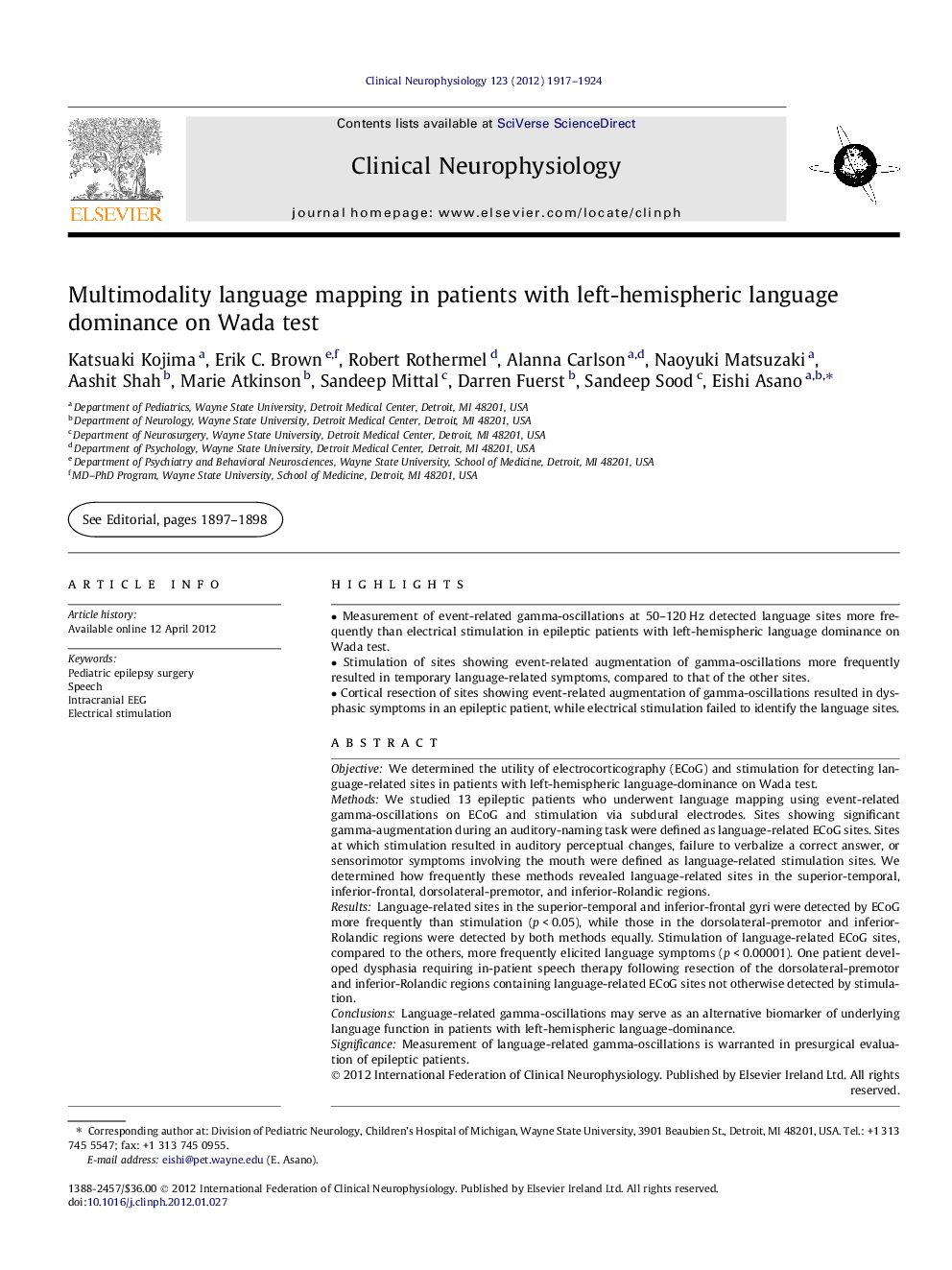| Article ID | Journal | Published Year | Pages | File Type |
|---|---|---|---|---|
| 3045372 | Clinical Neurophysiology | 2012 | 8 Pages |
ObjectiveWe determined the utility of electrocorticography (ECoG) and stimulation for detecting language-related sites in patients with left-hemispheric language-dominance on Wada test.MethodsWe studied 13 epileptic patients who underwent language mapping using event-related gamma-oscillations on ECoG and stimulation via subdural electrodes. Sites showing significant gamma-augmentation during an auditory-naming task were defined as language-related ECoG sites. Sites at which stimulation resulted in auditory perceptual changes, failure to verbalize a correct answer, or sensorimotor symptoms involving the mouth were defined as language-related stimulation sites. We determined how frequently these methods revealed language-related sites in the superior-temporal, inferior-frontal, dorsolateral-premotor, and inferior-Rolandic regions.ResultsLanguage-related sites in the superior-temporal and inferior-frontal gyri were detected by ECoG more frequently than stimulation (p < 0.05), while those in the dorsolateral-premotor and inferior-Rolandic regions were detected by both methods equally. Stimulation of language-related ECoG sites, compared to the others, more frequently elicited language symptoms (p < 0.00001). One patient developed dysphasia requiring in-patient speech therapy following resection of the dorsolateral-premotor and inferior-Rolandic regions containing language-related ECoG sites not otherwise detected by stimulation.ConclusionsLanguage-related gamma-oscillations may serve as an alternative biomarker of underlying language function in patients with left-hemispheric language-dominance.SignificanceMeasurement of language-related gamma-oscillations is warranted in presurgical evaluation of epileptic patients.
► Measurement of event-related gamma-oscillations at 50–120 Hz detected language sites more frequently than electrical stimulation in epileptic patients with left-hemispheric language dominance on Wada test. ► Stimulation of sites showing event-related augmentation of gamma-oscillations more frequently resulted in temporary language-related symptoms, compared to that of the other sites. ► Cortical resection of sites showing event-related augmentation of gamma-oscillations resulted in dysphasic symptoms in an epileptic patient, while electrical stimulation failed to identify the language sites.
